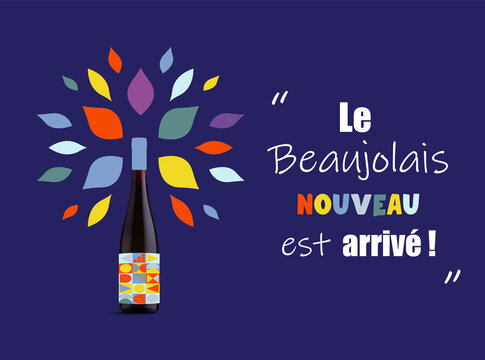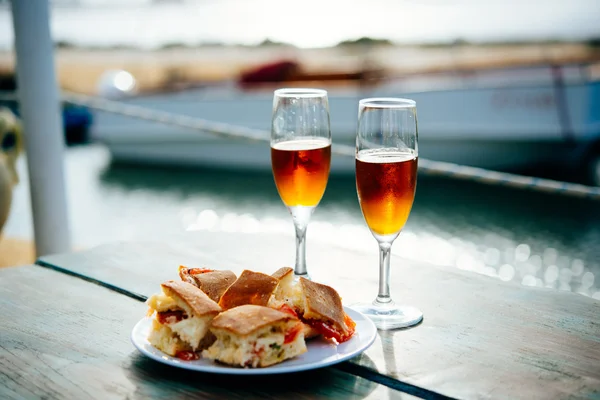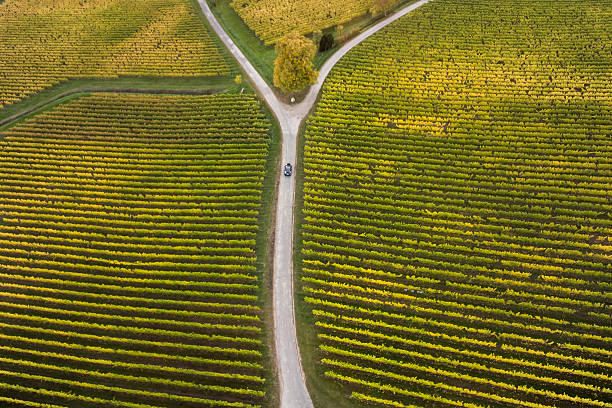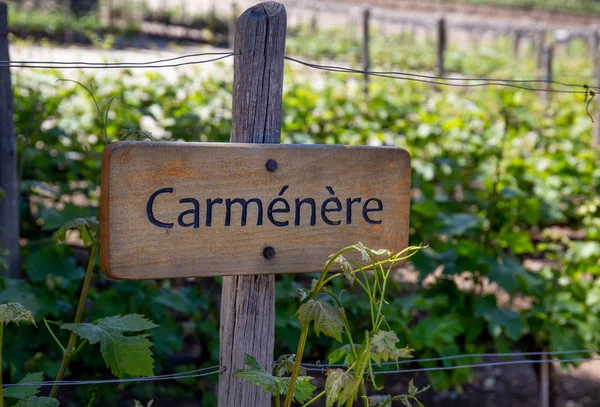Beaujolais is the Rodney Dangerfield of wine. For those readers too young to remember Rodney Dangerfield; he was a hilarious television comedian, who popularized the dark blue suit and red tie, long before a not-so funny person, looming today on television. At the beginning of his standup routine, a deadpan Rodney Dangerfield would utter this memorable line: "I tell you, I don't get any respect."
The same can be said about Beaujolais. The thing about Beaujolais and wine writers is that some of us believe it is our responsibility, at least once a year, to suggest appropriate wines with holiday foods.

Beaujolais for the Holidays
To intimately know a wine, it is important to know where the wine is from. True Beaujolais comes from a wine region in east-central France, between the cities of Macon and Lyons. Why true? Because there is a lot of wannabe bogus "beaujolais" trading on the name of the French wine.
The next main thing to know about (true) Beaujolais is it's made from Gamay Noir, or more officially, Gamay Noir à Jus Blanc , which means "white juice from a black grape." Beaujolais is planted in about 98% Gamay Noir, the rest is Chardonnay, Melon and Aligote, grown mainly for Beaujolais Blanc or table wine enjoyed by locals.
The other important thing to know is that Beaujolais is characterized by a wine making method known as carbonic maceration. Usually, understanding the fermentation technique used is not essential to wine enjoyment, but with Beaujolais, having some idea how CM works, will help to understand the nature of Beaujolais and why it may appeal to you.
For full CM, individual grapes or whole clusters, skins unbroken, are placed in an oxygen-free atmosphere, allowing the transformation of grape sugars in the juice into ethanol, without the presence of yeast. Essentially, a fermentation occurs within each berry. In practice, though, a percentage of the grapes at the bottom of the tank are partially crushed by the weight of the clusters above, creating semi-carbonic maceration.
CM is the main characteristic of Beaujolais Nouveau, a fruity, gulpable, ready-to-drink red wine, released in mid-November to the bistros of Paris and later around the world. Nouveau is dismissed as plonk by some wine merchants and restaurateurs, who refuse to sell it, while others see Nouveau as a revenue-generator that gets customers through the door.
 |
| Adobe image |
Nouveau Beaujolais not your drink? No worries, there are other more serious styles, such as basic Beaujolais and Beaujolais-Villages. The former is a red wine with all the character of Beaujolais: deep purple-red color, up-front juicy fruit and lots of texture. If the wine comes from one of the 38 named villages, the wine may carry the name of the village. A subtle difference, to be sure, but one that carries the promise, real or not, of higher quality.
That promise becomes a reality with the so-called Beaujolais Crus, 10 specific communes with a consistent reputation for higher quality wine. The Crus, different from each other in terms of texture, weight, flavor characteristics and longevity are: Brouilly, Cote de Brouilly, Fleurie, Chiroubles, Juliénas, Régnié, Saint-Amour, Chenas, Morgon and Moulin-à-Vent. The last three are considered the most structured and longest lived.
Cru Beaujolais are permitted under French wine law to be sold as AOC Bourgogne, but rarely do, as they are proudly Beaujolais, not Burgundy.
No matter what style of Beaujolais impresses your palate, drink it with the respect due a French wine that doesn't pretend to be anything but what it is.
Note: Every year I post my annual column on what I think is the best wine to have with the Thanksgiving feast. Look for this year's post on November 8.
Next post: Lazio Vino
To leave a comment, without signing into Google, send to boydvino707@gmail.com









